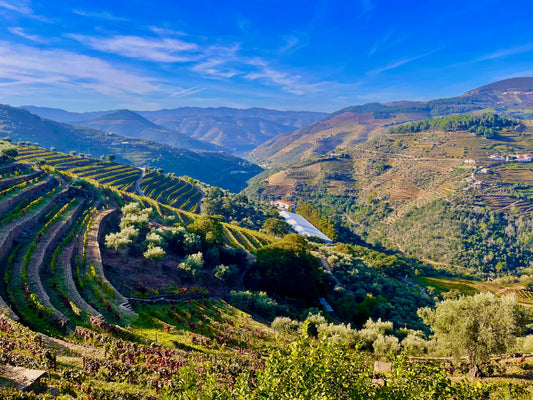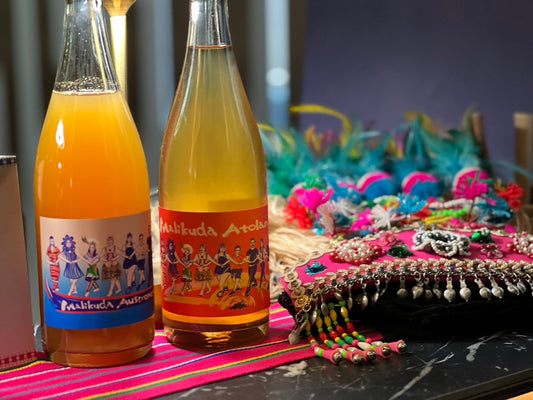From high-quality Torrontés to Semillon and Pedro Giménez (no, not that one), there’s a whole new world of white wines waiting to be discovered in Argentina
Argentinian wine has become synonymous with Malbec, and for good reason. Malbec makes up almost a quarter of the vineyard area in Argentina and the vast majority of exports.
But while Malbec has been the country’s success story, white wines produced in Argentina are waiting to be discovered.
The best-known of the Argentinian whites is Torrontés – but as an often intensely perfumed grape, it can be divisive and dismissed.
Three clones of Torrontés are recognized as separate varieties within Argentina, named after the regions where they originated: Riojano (La Rioja); Sanjuanino (San Juan) and Mendocino (Mendoza), with Torrontés Riojano reckoned the best for quality wines.
That quality is acknowledged to have increased hugely over the last couple of decades, in large part thanks to Susana Balbo. The first female winemaker in Argentina, Balbo made her name in Salta, becoming known as the ‘Queen of Torrontés’ for her careful handling of the grape, producing wines with lower phenolics, refreshing acidity and subtle floral notes. At her own estate in Mendoza, Torrontés still forms part of the portfolio, with barrel-fermented, easy-drinking fresh styles and late harvest all included.
Then there’s Pedro Giménez. This isn’t an alternative spelling of the Andalusian variety Pedro Ximénez – it’s no relation at all. Also known as Criolla Blanca, it’s a semi-aromatic grape related to Muscat of Alexandria, traditionally used to make simple, inexpensive wines almost exclusively sold domestically.
It’s hardly known in the UK, says sales director at Argentine specialist importer Ucopia Wines, Phil Crozier, but there are a few available, notably interesting examples like Ver Sacrum’s La Cayetana – a 90 percent concrete-aged Pedro Giménez blended with flor-aged Gewürtztraminer, Viognier and Semillon, which is listed by the big London wine shop Hedonism.
If Torrontés is divisive, Semillon seems to be lauded as one of Argentina’s most exciting whites. It’s been grown in Argentina since the mid-19th century and was once ubiquitous – so much so that the word actually stood for white wine. Despite many growers replacing Semillon with the more commercial Malbec, old vines can still be found, with Riccitelli’s Old Vines from Patagonia Semillon and Escala Humana’s Credo Semillon being notable examples.
With over 650 hectares still planted, perhaps the biggest challenge for producers is that it is, as Crozier puts it, ‘a wine-lover’s wine’ and not a straightforward sell.

Lee Isaacs, wine educator and Argentine specialist notes that mainstream varieties like Chardonnay are often a hit at tastings, and certainly premium Chardonnays from Argentina can stand up to the best in the world (they regularly score in the top 90s at major tastings like IWSC). Many are increasingly made from single vineyards, like Catena’s White Bones and White Stones, named after the soils on which they are grown; and Bemberg’s La Linterna Finca El Tomillo, while micro-terroir vinifications from tiny parcels like those from Mil Suelos are becoming more common.
Argentinian Sauvignon Blanc is not always considered interesting as a single varietal, often showing vegetal, asparagus notes, but newer plantings in Buenos Aires with its coastal influence may prove more exciting, with potential for varieties like Albariño and Verdejo in similar sites.

Riccitelli Blanco de la Casa and Old Vines Semillon
Sauvignon is however useful for blending with Semillon. Matías Riccitelli’s Blanco de la Casa blends Sauvignon Blanc from Gualtallary with old-vine Semillon from Peral and Chardonnay from 1,700m La Carrera, a great example of the importance of terroir in Argentina, and the care being taken to match sites and varieties. Crozier believes ‘white blends are the way forward’ although he is personally interested in local varieties like Torrontés and Pedro Giménez being incorporated to make blends truly representative of the country.
As winemaking and viticultural knowledge has improved the quality of reds, so it has also improved white wine production, particularly the benefits of picking earlier. Freshness is also being sought in higher altitude sites, whether that means closer to the Andes or further south into Patagonia.

Sebastián Zuccardi
Sebastián Zuccardi, winemaking director at Zuccardi Valle de Uco, believes the cool area of San Pablo in the Uco Valley to be ‘one of the best places in the valley to make white wines’. Zuccardi Fósil Chardonnay comes from a parcel here, only 300m from the Andean Cordillera Frontal range and it opened their eyes to the potential for whites from their first harvest in 2016.
Zuccardi’s new single-vineyard Chardonnay is grown in the cold and often frost-hit vineyard of Finca Las Cuchillas, 600m from the mountains. They are now so convinced of the potential here that a new 25-hectare plot is being planted solely to whites: Chardonnay of course, plus Sauvignon Blanc, Semillon, Riesling, Albariño and Verdejo.
As Argentina expands its offering of whites, not just with premium Chardonnays, Semillon and Torrontés, but also blends and new varieties, in the words of Sebastián Zuccardi: ‘The potential for making white wines is enormous.’
Ellie Scott is an independent wine consultant and communicator. Ellie founded her consultancy, Amante Wine, in 2021, after leaving a long-term career in finance to pursue her passions for wine and travel.




